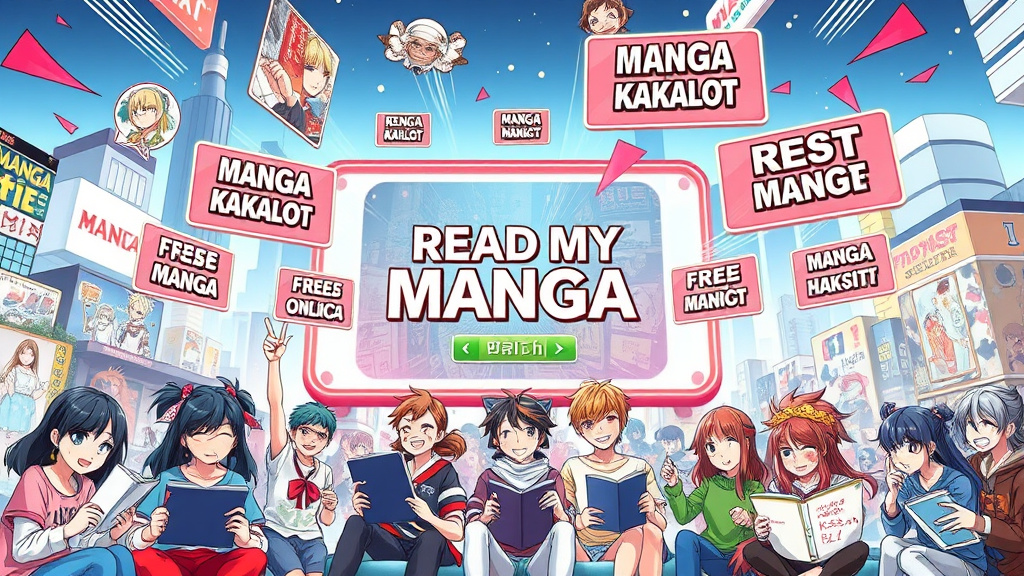In recent years, web manhwa has surged into the global consciousness, transforming the landscape of digital comics with its innovative art styles and compelling storytelling. Once confined to small local circles, this digital form is now a significant player in the entertainment industry, captivating audiences across continents and languages. Its flexible distribution model and rapid content updates foster a unique reader-creator relationship, making it a fascinating phenomenon worth exploring fully.
The Rise of Web Manhwa - A Comprehensive Overview
The emergence of web manhwa can be traced back to the early 2000s, but its true boom occurred over the past decade, propelled by the widespread adoption of smartphones and internet accessibility. Unlike traditional publications, web manhwa is primarily released online, offering serial chapters that keep readers eagerly awaiting each new installment. This immediacy and interactivity have revolutionized how stories are consumed and appreciated, blurring the lines between creators and fans. The rise also coincides with the global spread of Korean pop culture, which helped introduce web manhwa to a broader audience beyond Korea.
What truly fueled the web manhwa boom is its ability to embrace diverse genres and artistic styles, making it adaptable for a variety of tastes. Web platforms provide opportunities for budding artists and writers to showcase their talents without the barriers associated with traditional publishing. As a result, web manhwa has become a fertile ground for innovation, nurturing a new generation of creators while simultaneously reshaping reader expectations about storytelling, art, and community engagement.
 Hình minh họa: web manhwa – romance manga to read
Hình minh họa: web manhwa – romance manga to readExploring the Unique Art Styles and Visual Storytelling of Web Manhwa
One of the most striking elements of web manhwa is its distinctive art style, which often blends manga-inspired aesthetics with Korean cultural influences to craft visually captivating stories. Artists utilize bold linework, expressive character designs, and dynamic panel layouts to heighten emotional impact and kinetic action scenes. Many web manhwa also experiment with digital tools and effects, giving a modern gloss that rivals high-budget animations, yet retains an intimate feel that fans deeply appreciate.
In terms of visual storytelling, web manhwa creators tend to employ innovative techniques that enhance narrative pacing and mood. They're known for using color in ways traditional manga rarely do, with vibrant palettes in fantasy stories or muted tones for dramatic moments — a choice that enriches storytelling layers. Furthermore, the interactive potential of digital platforms allows creators to incorporate sound, animation, and reader choices, providing immersive experiences that push the boundaries of conventional comic storytelling.

Web Manhwa vs. Traditional Manga/Manhwa - Key Differences and Similarities
While web manhwa shares roots with traditional manga and manhwa, notable differences set them apart in production, distribution, and audience engagement. Traditional manga and manhwa are typically published in print magazines or volumes, often following strict serialization schedules. By contrast, web manhwa is predominantly digital, with rapid update schedules that cater to the instant gratification sought by online audiences. This immediacy fosters a more immediate feedback loop where readers can directly comment, influence story directions, or support creators through microtransactions.
Despite these differences, similarities abound. Both forms emphasize serialized storytelling, character development, and artistic craftsmanship. Moreover, web manhwa continues to draw inspiration from traditional Korean manhwa and Japanese manga, adopting storytelling tropes, visual cues, and genre conventions. Ultimately, web manhwa is less a replacement and more an evolution — leveraging digital technology to expand and rejuvenate the comic medium for a new generation of readers.
Top Web Manhwa Platforms and Their Impact on the Industry
Several platforms act as the backbone of the web manhwa ecosystem, each bringing their unique features and audience reach. Websites like Webtoon, Lezhin, and Tapas have pioneered easy-to-access, user-friendly environments where creators can publish their work directly. These platforms have democratized the web manhwa industry, reducing barriers for entry and offering lucrative monetization options for talented artists and writers.
The impact on the industry has been profound. By aggregating diverse content and fostering communities, these platforms have created vibrant ecosystems where stories can go viral quickly, leading to increased visibility and commercial success for creators. Moreover, their efforts in licensing and international expansion have brought web manhwa to global audiences, establishing it as a significant cultural export that rivals traditional comics from Japan or the West. The strategic partnerships between platforms and animation studios often lead to adaptations, further fueling the genre's popularity.
Genre Trends in Web Manhwa - From Romance to Fantasy to Action
Web manhwa has a reputation for genre diversity, offering something for every type of reader. Romance remains a perennial favorite, with stories exploring complex relationships, societal issues, and personal growth, often infused with humor or drama that resonates on a universal level. Fantasy web manhwa, on the other hand, explore intricate worlds where magic, mythical creatures, and epic quests captivate audiences seeking escapism and adventure.
Action-oriented web manhwa also dominate, showcasing high-octane battles and heroism, often blended with sci-fi elements or dystopian themes. Interestingly, many creators are pushing genre boundaries by merging multiple genres, like fantasy romance or sci-fi horror, leading to innovative narratives. This genre versatility indicates a maturing industry that responds dynamically to audience preferences, ensuring that web manhwa remains vibrant, relevant, and continuously evolving.
The Global Appeal of Web Manhwa - Factors Contributing to Its Popularity
Numerous factors contribute to the incredible global appeal of web manhwa. First, its accessibility online means that fans from around the world can access it instantly, often in their native language thanks to fan translations or official localizations. Second, the visually stunning artwork combined with compelling storytelling appeals across cultural boundaries, making web manhwa a universal language of sorts. The genre diversity further guarantees that there’s something for everyone, regardless of age, nationality, or taste.
In addition, the rise of social media and online communities has created platforms for fans to share, discuss, and promote their favorite web manhwa. This organic word-of-mouth marketing accelerates its reach, turning some titles into global phenomena. The cultural exchange facilitated by web manhwa enriches cross-cultural understanding, as stories incorporate themes, folklore, and aesthetics from Korea and beyond, fostering a worldwide appreciation of Korean digital storytelling and its various artistic influences.
Monetization Strategies and the Web Manhwa Creator Economy
The web manhwa creator economy hinges on innovative monetization strategies that balance accessibility with profitability. Platforms often employ a combination of ad revenue, microtransactions, and premium content to sustain creators financially. Many web manhwa artists also offer Patreon-style memberships, where fans can support their work directly and gain access to exclusive content or early chapters. This direct connection creates a more sustainable income stream for creators, encouraging them to maintain high-quality works.
Moreover, popular web manhwa titles can generate additional revenue through merchandise, animated adaptations, and licensing deals. These opportunities have turned some creators into influential professionals with fanbases comparable to mainstream celebrities. As the industry matures, new monetization models like limited edition art prints, virtual goods, and crowdfunding campaigns will likely further empower creators, collectively shaping a dynamic, creator-driven economy that will continue to evolve amid technological advancements and expanding international markets.
The Influence of Web Manhwa on Animation and Live-Action Adaptations
The visual richness and compelling narratives of web manhwa have increasingly influenced the animation and live-action industry, with many titles receiving official adaptations. These adaptations often renew interest in the original web comics, boosting sales and viewership. For creators, this trend provides a lucrative pathway and broadens storytelling possibilities, as animated or live-action forms can explore movement, voice acting, and special effects that elevate the source material.
Furthermore, the influence extends beyond mere adaptations. The storytelling techniques and artistic styles pioneered by web manhwa creators are now informing animation and TV productions worldwide. This cross-pollination results in more visually dynamic and narratively complex anime or dramas, which often incorporate the aesthetic sensibilities of digital comics. The synergy between web manhwa and other media forms thus promises a future where stories are more interconnected, immersive, and culturally diverse.
Navigating the Web Manhwa Ecosystem - Recommendations for New Readers
For newcomers eager to explore the world of web manhwa, starting with popular platforms like Webtoon or Lezhin can be very helpful. These sites offer curated recommendations, genre filters, and user reviews that guide new readers toward titles aligning with their tastes. It’s also beneficial for new enthusiasts to join online communities and forums where fans discuss theories, favorite stories, and upcoming releases, as this nurtures a deeper understanding of the ecosystem.
Remember that web manhwa can be addictive with its continuous updates, so pacing yourself is wise. Experimenting with different genres, following the works of new artists, and supporting creators through official channels enhances the experience while contributing to a sustainable industry. As the segment continues growing, staying engaged and curious ensures that new readers can fully enjoy the creativity and cultural richness that web manhwa offers.
The Future of Web Manhwa - Emerging Trends and Predictions
Looking ahead, web manhwa is poised for remarkable growth fueled by technological innovations such as augmented reality, virtual reality, and interactive storytelling. These developments could create immersive reading experiences that blend comics with gaming or live AR elements, transforming passive consumption into active participation. Artificial intelligence might also allow personalized story adjustments, catering to individual tastes and reading habits.
Additionally, the industry will likely see more international collaborations and hybrid genres that reflect a truly globalized creative landscape. As more creators from diverse backgrounds enter the fray, the thematic and artistic scope of web manhwa will expand, pushing boundaries and challenging cultural conventions. Ultimately, web manhwa’s future appears bright, promising to redefine narrative forms and further cement its position as a dominant digital storytelling medium that bridges cultures, styles, and technologies.
Conclusion
In summary, web manhwa has experienced an unprecedented rise, driven by innovative art styles, rapid digital distribution, and a diverse range of stories that resonate globally. Its influence surpasses traditional comics, impacting animation, live-action adaptations, and the broader cultural industry. As technology advances and creators explore new formats, web manhwa will continue to evolve, offering richer, more interactive experiences while fostering a vibrant, international community of fans and artists. This digital comic medium is undeniably shaping the future of visual storytelling, forging new paths for creativity and global cultural exchange.





